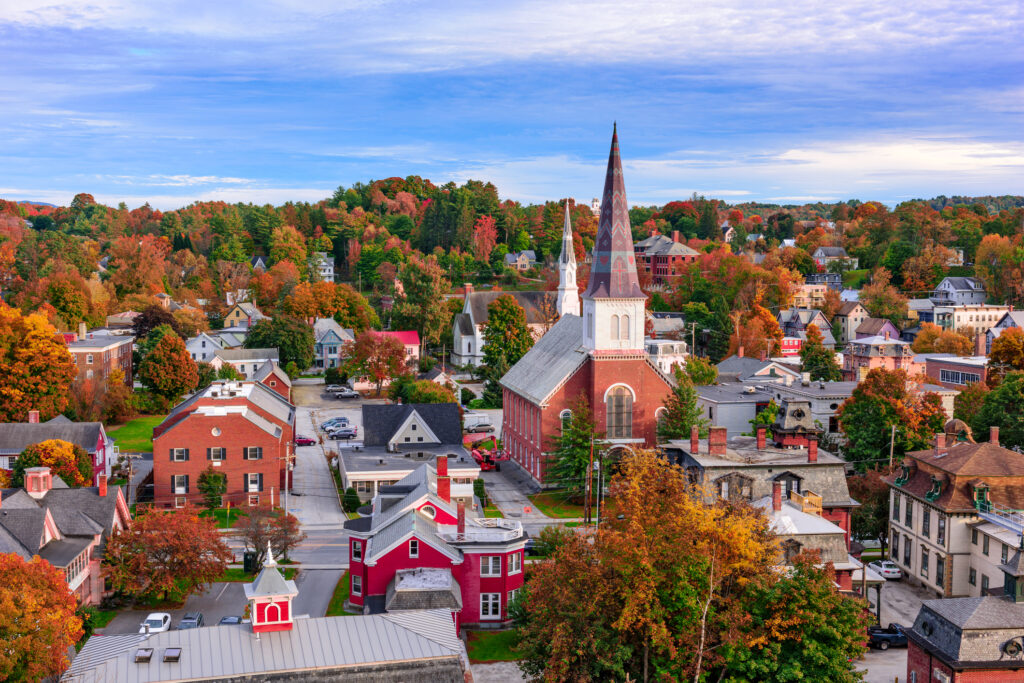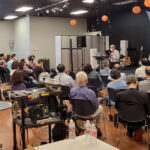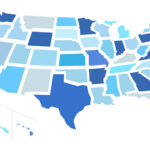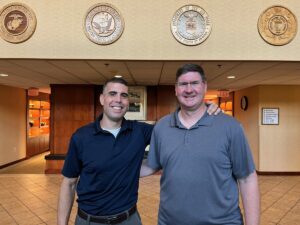
BRENTWOOD, Tenn. (BP) – If you’re looking for a Southern Baptist church, you’re most likely to find one in the South. If you want to find a growing Southern Baptist church, however, you might want to try the Northeast.
Analysis of the Southern Baptist Convention’s Annual Church Profile (ACP) by Lifeway Research revealed the convention is made up of mostly smaller churches dotting the southern United States. Still, more than 1 in 5 churches are outside of the South. And the only region where Southern Baptist churches are growing numerically is in New England. Additionally, churches started since 2000 are the most likely to be currently growing.
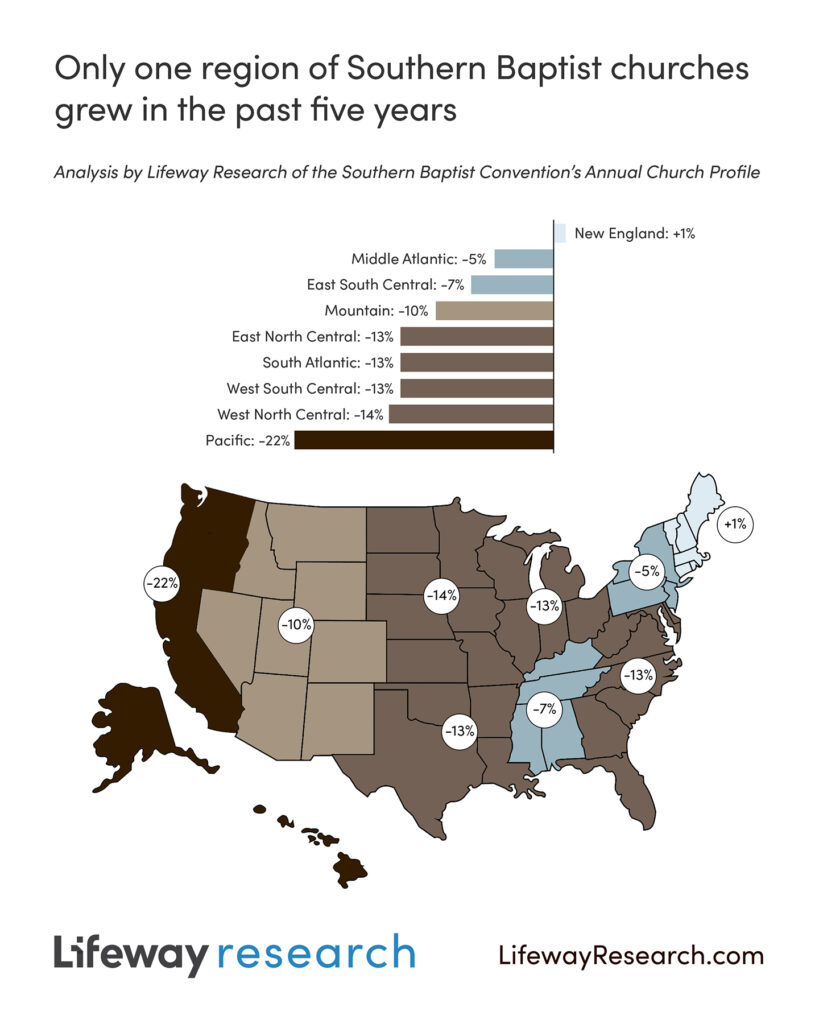
“The trends revealed in this analysis confirm that Southern Baptists must prioritize church planting in our effort to reach people for Christ,” said Kevin Ezell, president of the North American Mission Board. “As we do that, not only will we see lives changed with the Gospel, we will also grow our base of churches which will expand our Great Commission efforts throughout the world. I’m grateful for every church that is planting new churches, but we need even more to take up this challenge.”
Scott McConnell, executive director of Lifeway Research, noted that the largest Protestant denomination is growing in the least Protestant region of the U.S. “While it’s easiest to achieve high percentage growth in areas with fewer Southern Baptists to begin with, the growth is a sharp contrast to numerical declines throughout much of the country,” he said.
General picture of Southern Baptist churches
The Southern Baptist Convention mostly reflects its name, as 78 percent of its churches are in the South. Far fewer are in the Midwest (10 percent), West (9 percent), Northeast (3 percent) or U.S. territories (less than 1 percent).
Not quite half (45 percent) of churches are in suburban areas with a population of at least 2,500 but less than 50,000. The remaining percentage are split between urban areas (28 percent) with at least 50,000 in population and rural places (27 percent) with less than 2,500. Churches in the Northeast and West are more likely than those in the other regions to be in urban areas, while churches in the Midwest and South are mostly in rural and suburban places.
Most Southern Baptist churches (52 percent) were founded since 1950, including 23 percent that were started since 2000. Another 21 percent began between 1900 and 1949, while 27 percent trace their founding to before the 20th century.
The newest group of churches, those founded since 2000, make up an increasingly larger percentage of all Southern Baptist churches, climbing from 19 percent of churches in 2017 to 23 percent in 2022.
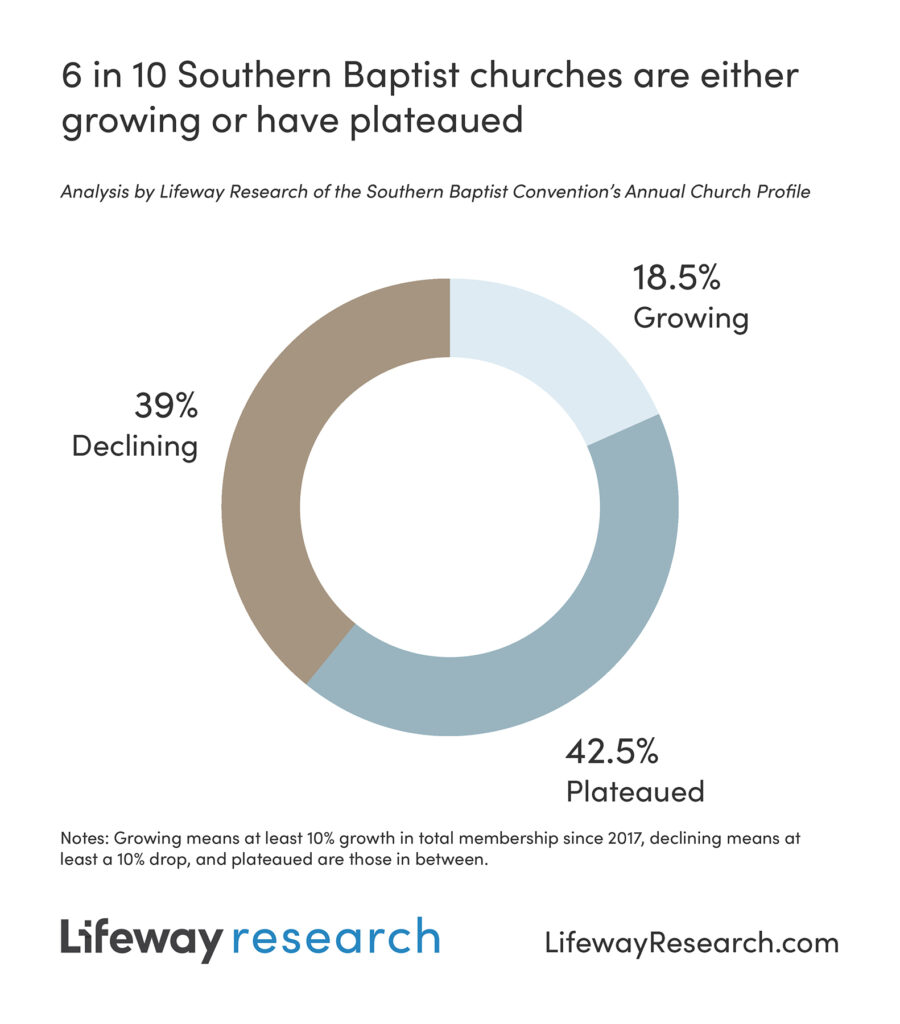
“Southern Baptists are the most prolific starter of new churches, but older churches continue to close at a slightly faster pace,” McConnell said.
Almost 3 in 4 churches (73 percent) have an average worship service attendance below 100, including 46 percent who have fewer than 50 for a typical service. One in 5 (19 percent) are between 100 and 249, while 5 percent average between 250 and 499. And 3 percent usually have at least 500 for their weekend worship service. Churches in the Northeast (53 percent), Midwest (55 percent) and West (53 percent) are more likely than those in the South (43 percent) to have an average worship service of fewer than 50 attendees.
The Southern Baptist Convention is increasingly comprised of the smallest churches. From 2017 to 2022, the percentage of Southern Baptist churches that were below 50 in worship attendance grew from 36 percent to 45 percent of the convention.
For most Southern Baptist churches, most of their worship attendees are also in a Sunday school class or small group Bible study. Still, 35 percent of churches have fewer than 50 percent of those who gather for worship also participating in a small group. Almost 2 in 5 churches say their participation rate runs between 50 percent to 74 percent. Slightly less than 1 in 5 (18 percent) report 75 percent to less than 100 percent are involved in a small group. Around 1 in 10 (9 percent) have 100 percent or more involvement.
The smallest churches, those with fewer than 50 in attendance for a worship service, are the most likely to have 25 percent or less of their congregation involved in small groups (21 percent). They are also among the most likely to have at least 100 percent participating (10 percent).
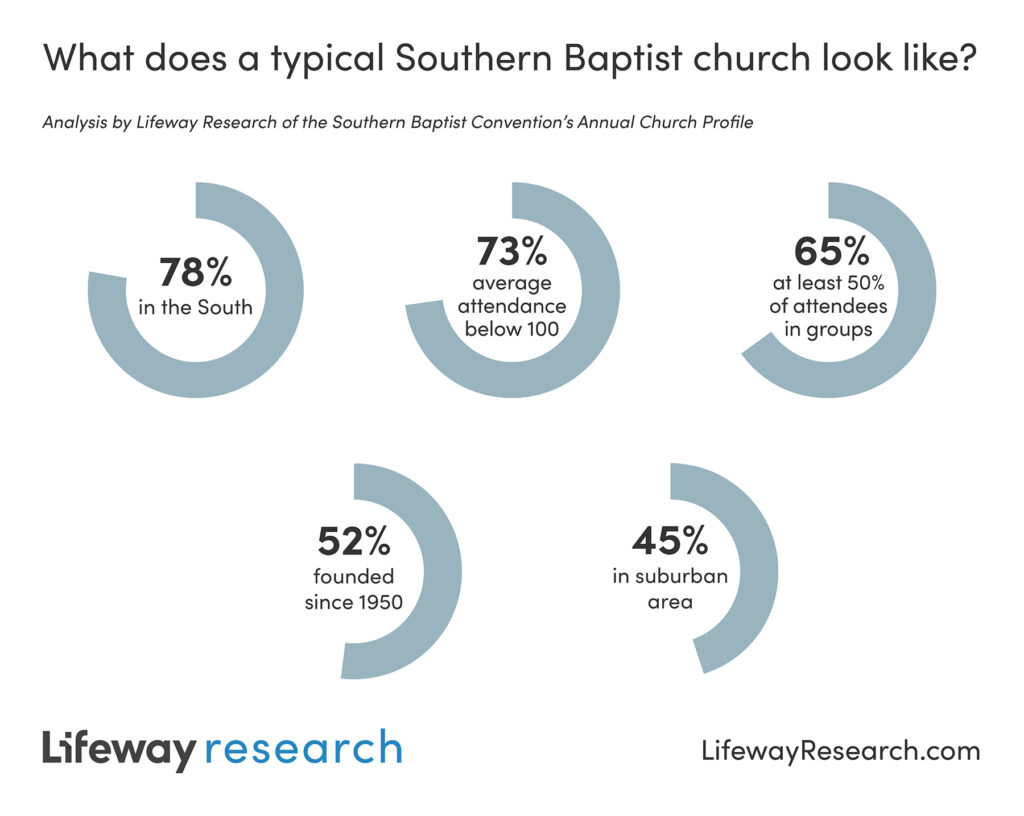
An increasing number of Southern Baptist churches have few small group participants. From 2017 to 2022, the percentage of churches that had fewer than 25 percent of their worship service attendees involved in a small group jumped from 5 percent to 16 percent, a 219 percent increase.
A 2022 Lifeway Research study found the average U.S. Protestant church had 44 percent of attendees involved in a small group, down from 50 percent in 2008.
“Declines in Sunday School and small group participation is not a short-term problem. It also does not bode well for the future,” McConnell said. “Having a higher percentage of your attendees attending small groups each week is one of four measures that predict higher worship attendance five years down the road.”
Mostly declines but pockets of growth
The most recent Annual Church Profile of the Southern Baptist Convention highlighted continued membership decline since 2006, falling to 13,223,122, the lowest number since 1978. The analysis comparing 2017 and 2022 indicates declines in most types of churches with occasional areas of membership and attendance growth.
Membership in Connecticut, Maine, Massachusetts, New Hampshire, Rhode Island and Vermont churches together grew by 1 percent from 2017 to 2022. Every other area saw a numerical decline for Southern Baptist churches.
The regions with the smallest declines were the Mid-Atlantic—New Jersey, New York and Pennsylvania—which fell 5 percent, and the East South Central—Alabama, Kentucky, Mississippi and Tennessee—which dropped 7 percent. Every other area had a double-digit percentage decrease over the past five years, with the largest decline happening in the Pacific region—Alaska, California, Hawaii, Oregon and Washington—which fell 22 percent.
“The West has the most churches with declining membership. And the Pacific portion of the West has the most dramatic declines among reporting churches,” McConnell said. “California churches had particularly low reporting on the ACP in 2022, making their numbers less reliable.”
Declining, plateaued or growing
Grouping churches according to their percentage change in membership since 2017 gives a picture of which types of churches are most likely to be growing and which must overcome the trends surrounding them. Those who saw an increase in total membership of 10 percent or more are classified as growing, a decrease of 10 percent or more are considered declining and those in between are plateaued. Overall, 18.5 percent of Southern Baptist churches are growing, 42.5 percent are plateaued and 39 percent are declining.
Newer Southern Baptist churches are more than twice as likely to have grown than churches started before the 21st century. More than 2 in 5 of those founded since 2000 are growing churches (42 percent). The younger the grouping a church falls into, the less likely they are to be plateaued, ranging from 52 percent of those founded before 1900 to 22 percent of those founded since 2000. Churches founded in the 20th century are the most likely to be declining—45 percent of those started between 1950 and 1999 and 39 percent of those that began between 1900 and 1949.
Specific analysis was conducted on churches started within the past five years. At least two-thirds of Southern Baptist churches founded in those years are either plateaued or growing. Within the 2017-2021 time frame, the longer a church has existed, the more likely it is to be a growing congregation. For those founded in 2021, 33 percent experienced at least 10 percent growth by 2022, while 2 in 3 churches planted in 2017 (67 percent) are currently growing.
The largest churches are the most likely to have grown. More than a quarter of churches with an average attendance of 500 or more (26 percent) report a membership increase of more than 10 percent in the past five years. Those churches are also among the least likely to have declined (35 percent).
Churches in larger population areas do not automatically equal growth. Southern Baptist churches in urban areas are the most likely to have grown since 2017 (22 percent), but those churches are also the most likely to have declined (46 percent). In fact, the likelihood of a church growing and declining increases moving from a smaller population grouping to a larger one. While rural churches are the least likely to have grown (16 percent), they are also the least likely to have declined (35 percent).
Similar extremes are also found in the regions of the country. Southern Baptist churches in the Northeast (36 percent) and the West (29 percent) are the most likely to have grown, but they are also the most likely to have declined (46 percent and 47 percent respectively). Churches in the South (45 percent) and Midwest (40 percent) are the most likely to have plateaued.
“It is increasingly difficult for a church to see growth today,” McConnell said. “Southern Baptists have never had more declining churches and fewer growing churches than we see today. As the majority of churches decline, they have fewer resources to invest in ministry. But the God who gave past growth is no less capable today.”
For more information, view the ACP Church Statistic report, the ACP Church Performance report and visit LifewayResearch.com.
Methodology
This analysis was based on data reported on the Annual Church Profile (ACP) in 2022 and 2017. The ACP is an annual statistical census of Southern Baptist congregations conducted cooperatively by local associations, state conventions, and Lifeway Christian Resources. Around 7 in 10 Southern Baptist churches (69 percent) reported at least one item on the 2022 ACP.
-30-
Aaron Earls is a writer for Lifeway Christian Resources.
